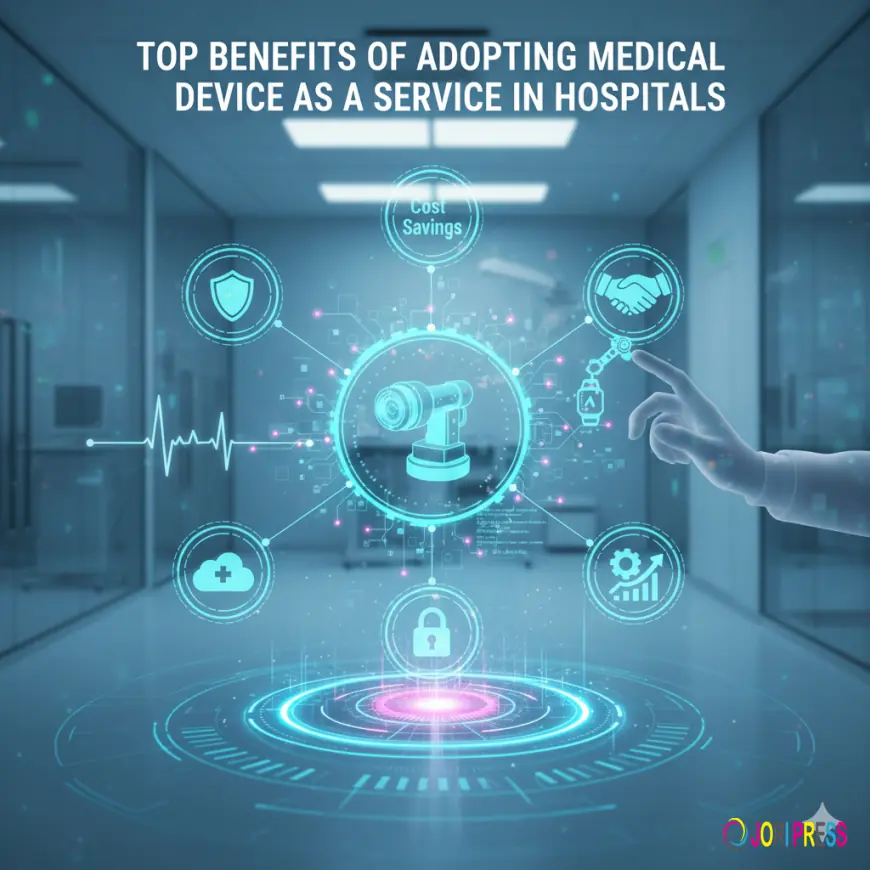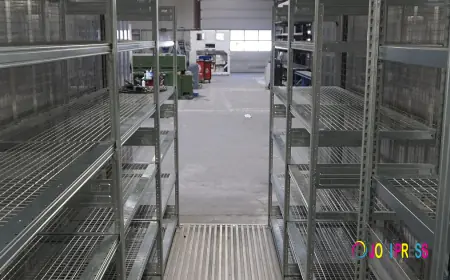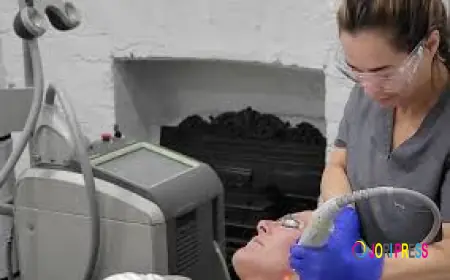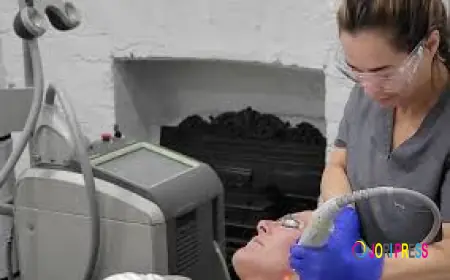Top Benefits of Adopting Medical Device as a Service in Hospitals
This is where Medical Device as a Service (MDaaS) is transforming hospital operations. By adopting a subscription-based approach to medical devices, healthcare providers can access the latest technology without the financial and operational burden of ownership.

In today’s fast-evolving healthcare landscape, hospitals face increasing pressure to deliver high-quality patient care while managing costs, maintaining compliance, and upgrading technology. Traditional models of owning and maintaining medical equipment are becoming less sustainable due to rapid innovation cycles and high capital expenditures. This is where Medical Device as a Service (MDaaS) is transforming hospital operations. By adopting a subscription-based approach to medical devices, healthcare providers can access the latest technology without the financial and operational burden of ownership. Let’s explore the top benefits of adopting Medical Device as a Service in hospitals and how this model is redefining healthcare delivery.
1. Cost Efficiency and Reduced Capital Expenditure
One of the most significant advantages of adopting MDaaS is its impact on hospital finances. Traditionally, purchasing advanced medical devices requires substantial upfront investment, followed by ongoing costs for maintenance, calibration, and eventual replacement. With MDaaS, hospitals shift from a capital expenditure (CapEx) model to an operational expenditure (OpEx) model.
This pay-per-use or subscription-based structure allows hospitals to better manage cash flow and budget predictably. Instead of tying up funds in equipment ownership, they can allocate resources to other critical areas such as patient care, staff training, and facility improvement. Over time, this approach not only saves money but also reduces financial risks associated with technological obsolescence.
2. Access to the Latest Medical Technology
The pace of innovation in medical technology is unprecedented. New imaging systems, diagnostic tools, and surgical devices are launched regularly, making it challenging for hospitals to keep up. Under the Medical Device as a Service model, hospitals can continuously access state-of-the-art equipment without the need for frequent capital investments.
Service providers ensure that devices are regularly updated or replaced as new versions become available. This ensures that healthcare professionals always have access to cutting-edge tools for diagnosis and treatment. Ultimately, this leads to better clinical outcomes, faster diagnoses, and more efficient treatment processes—benefiting both patients and care providers.
3. Improved Equipment Maintenance and Uptime
Equipment downtime can severely disrupt hospital operations and patient care. With MDaaS, hospitals benefit from comprehensive maintenance and technical support provided by the service vendor. These services include preventive maintenance, real-time monitoring, and timely repairs to ensure optimal device performance.
Since vendors are responsible for equipment upkeep, hospitals can reduce the burden on their internal biomedical engineering teams. This proactive maintenance model minimizes unplanned downtime and maximizes device uptime, ensuring smooth and reliable healthcare delivery. Additionally, it eliminates the administrative hassle of managing multiple service contracts or maintenance schedules.
4. Enhanced Flexibility and Scalability
Hospital needs are dynamic—they can fluctuate based on patient volumes, specialties, and technological demands. MDaaS offers the flexibility to scale equipment usage up or down depending on operational requirements. For example, during a pandemic or seasonal surge, hospitals can quickly expand their capacity by adding more devices on short notice.
This flexibility allows healthcare facilities to remain agile and responsive to patient needs without committing to long-term equipment ownership. Moreover, as hospitals grow or shift their focus to new specialties, they can easily upgrade or replace devices within their service plan, ensuring continuous alignment with clinical goals.
5. Predictable Budgeting and Transparent Pricing
Budget predictability is a major advantage of the MDaaS model. Since hospitals pay a fixed subscription fee or per-use charge, they can forecast expenses more accurately. This transparency eliminates unexpected costs related to equipment breakdowns, spare parts, or software upgrades.
With this predictable cost structure, hospitals gain better financial control and can plan their long-term investments more effectively. Transparent pricing also fosters accountability and trust between hospitals and MDaaS providers, strengthening the partnership and ensuring mutual value creation.
6. Simplified Compliance and Data Management
Medical devices are subject to strict regulatory requirements for safety, performance, and data security. Ensuring compliance with standards such as FDA, CE, and ISO can be complex and resource-intensive. MDaaS providers simplify this by taking responsibility for regulatory compliance, quality assurance, and data management.
Service providers regularly update devices with the latest firmware, ensure adherence to data privacy regulations (like HIPAA), and maintain detailed records of maintenance and calibration. This relieves hospitals from regulatory overhead while maintaining the highest levels of safety and accuracy. It also ensures audit readiness and peace of mind for administrators and clinicians alike.
7. Improved Operational Efficiency and Workflow Optimization
Medical Device as a Service is more than just an equipment model—it’s a catalyst for operational excellence. By centralizing device management, hospitals can streamline their workflows and reduce administrative bottlenecks. Integration with hospital information systems (HIS) and electronic medical records (EMR) allows for seamless data sharing, faster reporting, and improved decision-making.
Automated performance analytics provided by MDaaS vendors offer real-time insights into device utilization, efficiency, and patient outcomes. This data-driven approach helps hospitals identify areas for improvement, optimize resource allocation, and enhance overall productivity.
8. Sustainability and Reduced Environmental Impact
Sustainability is becoming a core value in modern healthcare operations. Owning and frequently replacing outdated devices contributes to electronic waste and environmental degradation. MDaaS supports a circular economy by maximizing the lifecycle of medical equipment through refurbishment, recycling, and responsible disposal.
Since vendors manage the equipment lifecycle, they are incentivized to design durable, energy-efficient, and recyclable devices. This model aligns with hospitals’ sustainability goals and helps reduce their environmental footprint without compromising care quality.
9. Enhanced Patient Experience and Care Quality
At the heart of every hospital decision lies the goal of improving patient outcomes. With MDaaS, hospitals can provide faster, more accurate diagnoses and treatment using the latest medical technology. Reduced downtime, improved device reliability, and access to advanced features directly translate to better patient care.
Moreover, when clinicians have access to reliable equipment, they can focus on patient interaction rather than troubleshooting device issues. The result is a smoother, more confident, and patient-centered healthcare experience.
10. Strategic Partnerships and Continuous Innovation
Adopting MDaaS fosters strong partnerships between hospitals and technology providers. Instead of one-time transactions, these relationships evolve into long-term collaborations focused on innovation and continuous improvement. Service providers gather feedback from hospital staff and patients to enhance device performance, usability, and safety.
Such collaborations accelerate innovation in medical technology and ensure hospitals remain at the forefront of healthcare delivery. This ongoing exchange of knowledge and data drives smarter, more adaptive healthcare ecosystems.
Conclusion
The Medical Device as a Service (MDaaS) model is revolutionizing how hospitals access and manage medical technology. By replacing ownership with a flexible service-based approach, hospitals can reduce costs, improve operational efficiency, ensure compliance, and deliver superior patient care.
As healthcare systems continue to evolve, MDaaS offers a sustainable, scalable, and innovation-driven path forward. Hospitals that embrace this model today will be better positioned to adapt to tomorrow’s challenges and opportunities—delivering not just care, but smarter, more efficient healthcare for all.
What's Your Reaction?
 Like
0
Like
0
 Dislike
0
Dislike
0
 Love
0
Love
0
 Funny
0
Funny
0
 Angry
0
Angry
0
 Sad
0
Sad
0
 Wow
0
Wow
0



















































